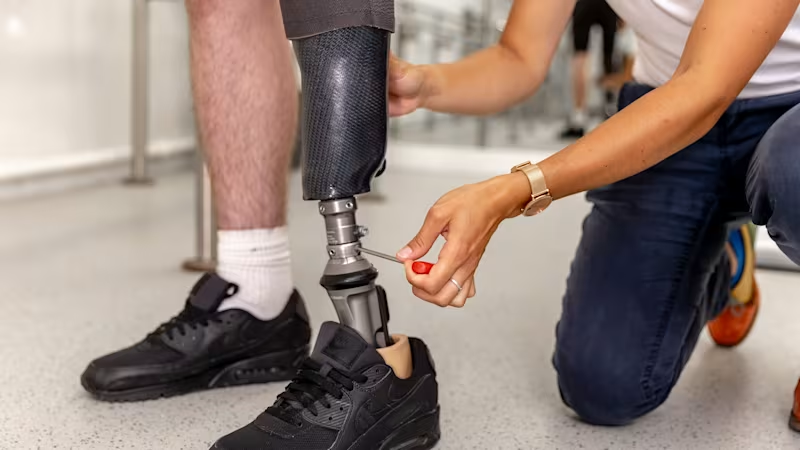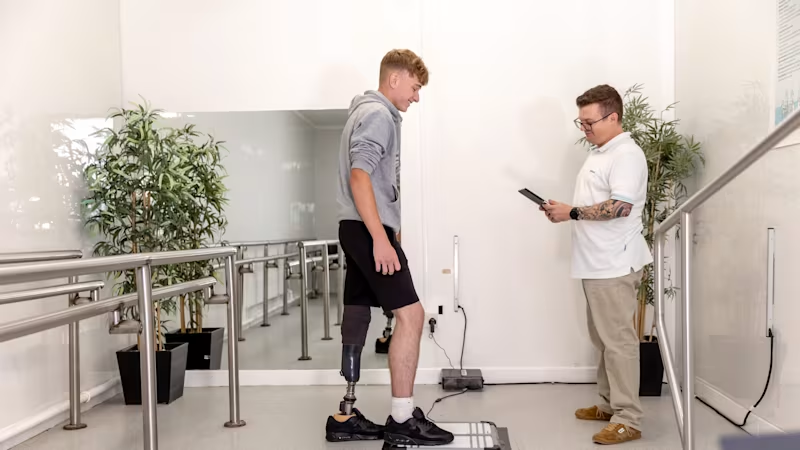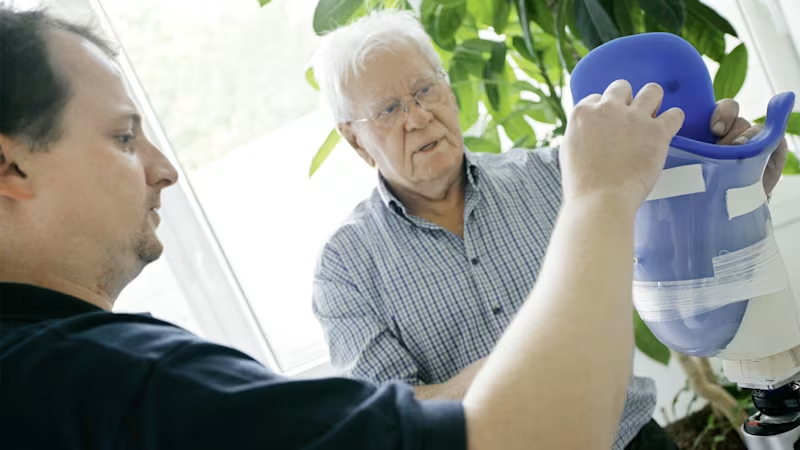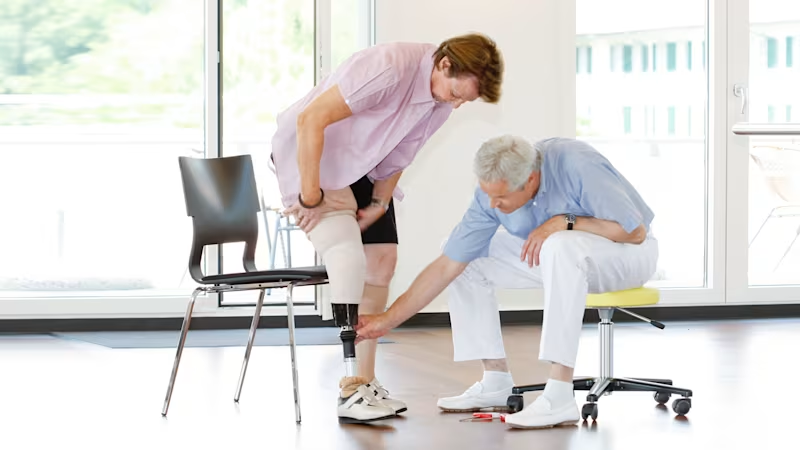


After your leg amputation.
Read about residual limb healing, phantom pain, initial exercises after the amputation and the fitting with an interim and definitive prosthesis.
Read about residual limb healing, phantom pain, initial exercises after the amputation and the fitting with an interim and definitive prosthesis.
What lies ahead after your amputation?
After an amputation, you are undoubtedly wondering: What happens next? Directly after your operation, recovery and the healing of the residual limb are initially the main concerns. All are important so that you can begin your rehabilitation and a prosthesis can be fitted. Together with your care team, you'll focus on rebuilding your strength, carefully caring for your residual limb, and taking the first steps using a prosthetic leg.
This article will guide you through some of the key steps in that process. Just remember: everyone’s experience and recovery process can look very different.
To start rehabilitation:
You should have little to no pain in the residual limb
Your residual limb should be capable of bearing weight
Swelling and water retention should be reduced and stabilised
You should be able to move your residual limb as much as possible in all directions
Your individual circumstances will determine how long it takes you to reach this point. However, you can promote healing by actively working towards it. While this often demands patience and a lot of endurance, it pays off: The more mobile you are when you start rehabilitation, the sooner you can be fitted with a prosthesis.
Prepare your residual limb for wearing a prosthesis
The first steps in amputation rehab begin immediately after your operation and focus on the healing of your residual limb. In hospital, the doctors and nursing team treating you will continuously monitor and check the healing process, look after the daily treatment of your residual limb while also monitoring your wound carefully, watching for any sign of infection.
Residual limb healing
Residual limb pain
Various types of pain may occur in your residual limb after amputation. These may include bone pain, wound pain, nerve pain or phantom pain. Each type of pain is treated differently depending on its cause. Various treatment options are available, such as medication, warming/cooling or wrapping the residual limb. You can talk to your doctor and/or pain therapist about this.

Wound healing
When you wake from your surgery, your leg will usually have a dressing consisting of simple bandages or a cast with a small tube coming out of it that drains fluid and blood from the wound. The duration of the wound healing process will be individual to you. Once the initial healing phase is completed, the connective tissue cells grow stronger, but even if the scar appears to have healed well from the outside and only the colour of the scar tissue changes slightly, it can take up to a year and a half before it is fully healed beneath the skin.

Oedema therapy
After your operation, the tissue around your residual limb will usually swell up at first. This swelling (oedema) is a normal reaction to the operation, and it usually subsides after a week. A loose wound dressing will be applied until the sutures are removed, this is to avoid any additional pressure being applied to the residual limb at first.

Desensitising the skin
The skin on your residual limb can be very sensitive following your amputation. You can help desensitise it by working closely with your treatment team. One exercise that can help is gently rolling a rough towel or washing mitt over the sensitive skin. You can also lightly massage the residual limb with a brush using an upward motion. Using a massage ball with nubs also helps make the skin less sensitive. By working closely with your treatment team they will help to show you the proper technique for each exercise.
Scar care
The surgical wound on your residual limb generally closes within three to four weeks. Even when it looks well healed from the outside, the underlying scar tissue will take longer to heal fully (this may take up to 18 months). Talk to your doctor or the nursing staff about scar care that is suitable for you. It may be advisable to moisten the scar shortly after the operation. Your therapist will train you in the best way to clean and massage the skin, as the more soft and flexible your skin is, the better your residual limb is prepared for wearing a prosthesis.

Causes of phantom pain, types and therapy options
Many people experience phantom limb pain (pain in the limb that was amputated). Experts believe that up to 70 per cent of all amputees experience this (in many cases temporarily). The psychological strain phantom limb pain can cause sufferers can be very high and there are various theories regarding its cause. Nevertheless, many therapy options are available, however, there is no treatment that helps everyone equally so we recommend speaking to your doctor or prosthetist to find the best treatment option for you.
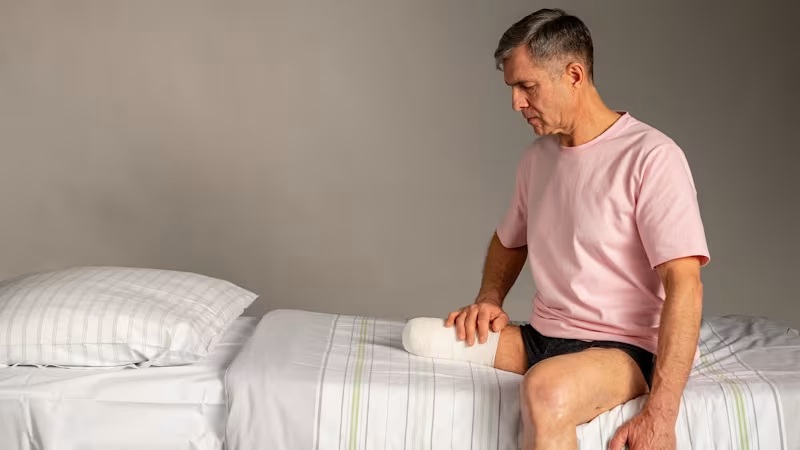
Causes of phantom pain
Experts have various theories regarding the origin of phantom limb pain. One of the most common ones is that different areas in the brain are responsible for different body regions. When a body part is missing and doesn’t produce any feedback anymore, the brain interprets this lack of a signal as pain. It’s interesting to note that people with a congenital limb difference, known as dysmelia, do not experience phantom pain as often. This suggests that there is a sort of “learning effect” in the brain. Pain memory appears to play an important role as well. If you already experienced pain before your amputation, this can affect the development of phantom pain and should also be taken into account in selecting the therapy.
Types of phantom pain
Phantom limb pain is very individual and depends on many factors, and it affects individuals with upper or lower amputations equally. The pain may be triggered or intensified by certain types of weather, exposure to cold temperatures or emotional stress. It may occur only at certain times, gradually decrease or increase, or always be present. The type, intensity and characteristics of the pain can differ as well. Those affected often describe pulling and piercing or burning and cramp-like pain.
Therapy options for phantom limb pain
Various kinds of pain may occur in your residual limb after an amputation. It is important to differentiate between residual limb pain and phantom limb pain, since these types of pain are treated differently.
There are many different therapy approaches for both types of pain. Combining several types of therapy is recommended for phantom limb pain since there is no standard therapy that helps everyone. Many therapies are of a long-term nature and need your active participation, they may require a great deal of patience and endurance, but we can only encourage you to do the therapy, even if it is challenging. Be sure to talk to your doctor, prosthetist and therapist. They will work closely with you and support you to the best of their ability. The following methods are suitable means of therapy for phantom limb pain after an amputation and complement each other:
Mirror therapy: sitting in front of a mirror, your sound limb is reflected with the help of mirrors. This makes it appear as though your amputated limb is there again. Known as the phantom limb, it can now be moved purposely via the sound side and therefore influenced. This makes it possible to release your phantom limb from cramped and painful positions with the help of movements by the sound side, moving it into a more comfortable, pain-free position. Comparable results can be obtained by looking at photographs (known as lateralisation training). This is intended to practise right/left memory.
Sensorimotor therapy: massaging your residual limb with various materials stimulates nerves via the skin. Ultrasound, thermal or electrotherapy can be used here as well.
Wearing a prosthesis or liner: for many individuals, pain is alleviated by wearing a prosthesis or liner. This may be due to sensory stimulation of the residual limb as well as the idea that, with a prosthesis, the body part is still there so the brain is receiving corresponding feedback.
Pain therapy: a pain therapist is a doctor specialising in the treatment of pain. Your doctor will put you in contact with such a specialist. It’s important that you do not try to treat yourself with pain medication in any case.
Residual limb pain
Residual limb pain and phantom limb pain are different types of pain and are therefore treated differently. For this reason, it’s important that you are thoroughly examined in order to determine which type of pain your are experiencing. Medical examinations will help clarify whether you may have bothersome scar tissue, painful residual limb neuromas, inadequate soft tissue coverage or excess soft tissue. These causes of pain can be eliminated on a long-term basis by adapting the components or via another surgical intervention.
Certain operating techniques can also help reduce residual limb pain and especially the pain originating from some nerves in the residual limb after the amputation. If possible, preventive pain therapy should commence during the operation with a local anaesthetic or begin directly after the operation to prevent the onset of pain or the development of chronic pain.
Stay mobile
Even while your residual limb is healing, you can start your rehabilitation. Your doctor or physiotherapist will show you specific exercises, such as the proper position in bed to ensure the muscles in your residual limb do not shorten or stiffen, regular breathing exercises and light movement and mobilisation exercises which will help stabilise your circulatory system. Doing these exercises will help you stay mobile and active.

What happens during your rehabilitation?
After being released from the hospital, your care will usually continue at your prosthetic centre. The goal here is to prepare you for everyday life with a leg prosthesis.

The process of getting a prosthesis
After your amputation, you will have many questions: When will I get a prosthesis, how do I get a prosthesis and which prosthesis will I get?
A prosthesis will fulfill many functions: On the one hand, it restores your mobility, and by wearing it, you also reduce or avoid posture asymmetries and balance disorders that could result from the missing weight of the amputated leg. It also prevents your sound leg from being overloaded, which could result in long-term problems. You will be put in touch with your local limb centre, where you can talk to your prosthetist. They will explain the process leading up to your fitting with a prosthesis. Many factors will determine when you get a prosthesis and when you are fitted with your initial prosthesis. Your prosthetist will be able to give you detailed advice specific to you.

Further information
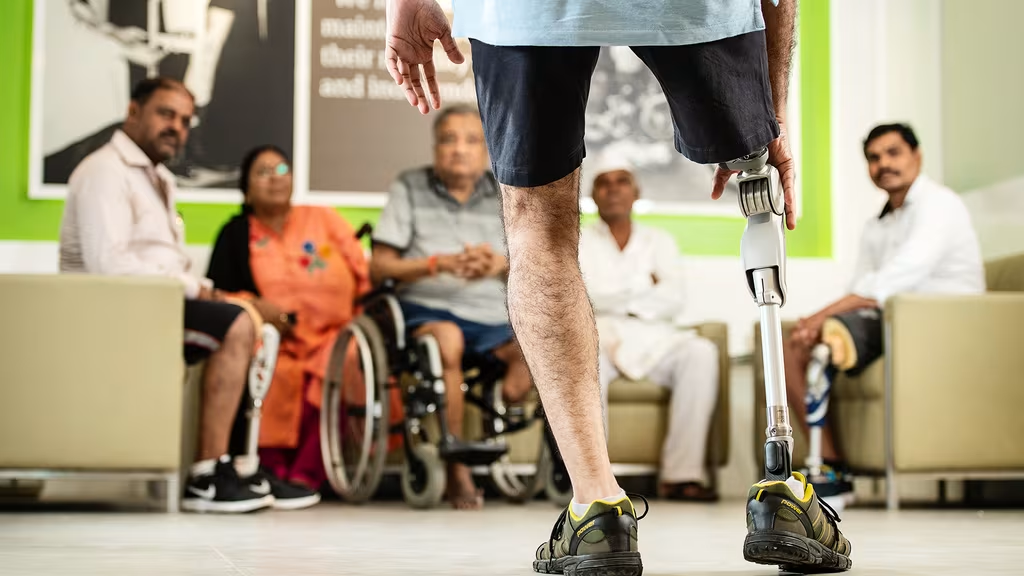
Preparing for your amputation surgery
Learn about what happens leading up to a planned amputation and how you can prepare yourself.
Learn about what happens leading up to a planned amputation and how you can prepare yourself.

Rehabilitation and leg prosthesis
Discover detailed information on caring for the residual limb, handling prostheses and gait training for a life with a leg prosthesis.
Discover detailed information on caring for the residual limb, handling prostheses and gait training for a life with a leg prosthesis.

Prosthetic legs
Learn how prosthetic legs help people regain their mobility, rebuild their confidence, and explore their world again.
Learn how prosthetic legs help people regain their mobility, rebuild their confidence, and explore their world again.
